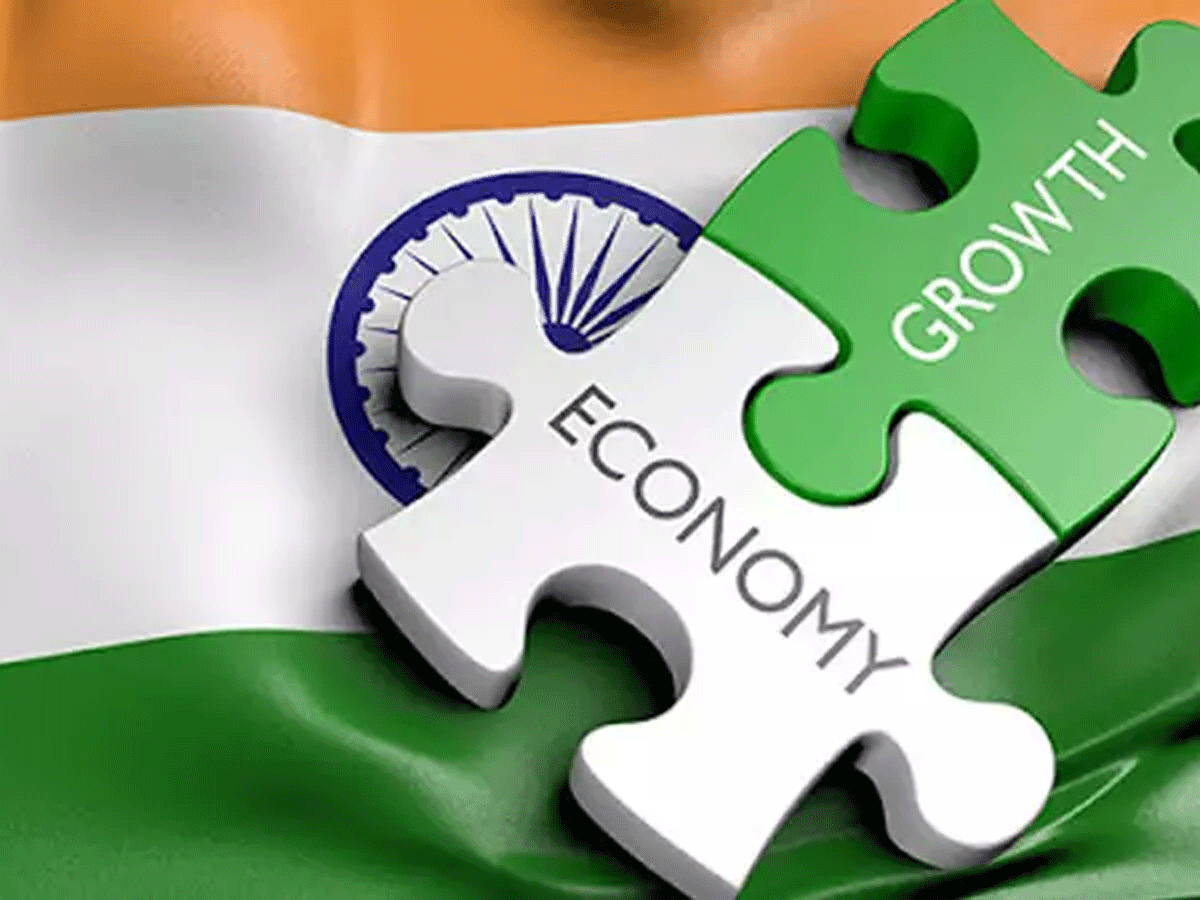
The Long-term hurdles to India’s export growth
- August 12, 2022
- 0
India, unlike the Asian Tigers, has never managed to be an export-driven economy. Since the economic reforms were initiated in 1991, private investment and domestic consumption- along with government spending- have primarily driven India’s economic growth.
Merchandise exports have played only a supporting role. Service exports – largely IT services- have been a redeeming factor in India’s export story. India’s share in global merchandise trade has firmly remained below 2 per cent- which is abysmal considering the size of our economy.
The failure to become a global merchandise export power is largely because India has not really become a hub for global manufacturing. Foreign manufacturers in India have largely focused on the domestic market, instead of treating it as a low-cost, high-quality manufacturing base for exports. Despite a realisation among global companies that they need alternative hubs to reduce dependence on China, few of them have looked at India seriously.
Three factors have played spoilsport to India becoming a global manufacturing power. One, is the rapid changes in policy and the uncertainty that investors have to face. Anyone putting millions to build a plant on the ground would like a stable policy regime. Constant changes in tax rates, tweaking of rules and abrupt reversals following policy announcements have spooked many investors. The changes in wheat, petroleum products and steel export policies or tariffs are recent examples, though all of them have been justified by the government as being absolutely necessary given the current domestic requirements of the economy.
The second factor, which is talked about whenever businessmen meet, is the cost and difficulty of doing business on the ground. This includes not only well-known issues such as poor roads, higher cost of power, longer turnaround times at ports, but also other issues like dealing with local level officials, meeting myriad regulations at the state, district and city levels and other such problems. These have often negated whatever cost benefits they have got from government incentives like the production linked incentive scheme.
The third factor that is almost never talked about but need to be examined and discussed is the poor quality standards set by Indian regulators and the government in almost every sector- and the even worse monitoring and implementation of these standards. In sectors ranging from pharmaceuticals and drugs to automobiles to food and cosmetics- Indian manufacturers have a lower quality bar to meet than their global counterparts. Worse, there is little monitoring or penalty even if these low standards are not adhered to. For some reason, Indian policymakers have never felt that Indian consumers are being short-changed because of this.
An Indian company exports higher quality goods to other countries than it sells in the Indian market. Moreover, there is no real punitive cost of not meeting the standards. Product recalls are almost unknown in the country.
Yet, no country has succeeded in becoming a merchandise export powerhouse unless its quality standards are uniformly high. Some policymakers argue that higher standards are impossible to implement in a country of India’s size and with the number of small and medium enterprises it has. The cost increases, they claim, would make many of these enterprises uncompetitive if they tried to sell high quality products in the country. Moreover, the consumers may not be able to afford it or even care for the difference.
This is faulty thinking. The government should focus on removing hurdles that increases the cost of manufacturing or just doing business in India. At the same time, it should set higher quality standards and monitor them stringently. This is an essential condition if India’s manufacturing needs to meet global standards.
Prosenjit Dutta
निर्यात वृद्धि से जुडी दीर्घकालिक बाधाएं
अन्य एशियाई देशों के उलट भारत कभी निर्यात आधारित अर्थव्यवस्था नहीं रहा. सन 1991 में आर्थिक सुधारों की शुरुआत के बाद से ही निजी निवेश और घरेलु खपत तथा सरकारी व्यय ही भारत की आर्थिक वृद्धि के वाहक रहे।
वाणिज्यिक निर्यात की भूमिका हमेशा सहायक की रही. सेवा निर्यात, खासतौर पर आईटी सेवा निर्यात देश की निर्यात गाथा में बचाव मुहैया कराने वाला रहा. वैश्विक वाणिज्यिक व्यापार में भारत की हिस्सेदारी 2 फीसदी से कम बनी हुई है. हमारी अर्थव्यवस्था के आकार को देखते हुए यह अत्यंत कम है।
हमारा देश वैश्विक वाणिज्यिक निर्यात के क्षेत्र में बड़ी शक्ति इसलिए नहीं बन सका क्योंकि हम वैश्विक विनिर्माण का केंद्र नहीं बन सके. भारत में होने वाला विदेशी विनिर्माण मोटे तौर पर घरेलु बाजार पर केंद्रित है. उन्होंने भारत को सस्ते और उच्च गुणवत्ता वाले निर्यात उत्पादों का निर्माण केंद्र नहीं बनाया. यह स्थिति तब बनी जब वैश्विक कंपनियों को भी इस बात का अहसास हो गया था कि उन्हें चीन पर निर्भरता कम करने के लिए वैकल्पिक केंद्र चाहिए। बहुत कम कंपनियों ने भारत को विकल्प बनाने के बारे में गंभीरता से विचार किया।
भारत जिन वजहों से वैश्विक विनिर्माण शक्ति नहीं बन सका उनमे तीन अहम है. पहली वजह, निवेशकों को हमारी नीतियों में तेज बदलाव और अनिश्चितता का सामना करना पड़ता है. कोई भी व्यक्ति जो अगर एक संयत्र स्थापित करने पर करोडो रूपये खर्च करता है तो वह चाहता है कि नीतिगत स्थिरता हो. कर दरों में निरंतर बदलाव, नियमों में बदलाव और नीतिगत घोषणाएं करके उन्हें अचानक वापस ले लेने जैसी घटनाओ ने निवेशकों को संशकित किया. गेहूं, पट्रोलियम उत्पादों और स्टील निर्यात की नीतियों या दरों में बदलाव हालिया उदाहरण हैं। हालांकि सरकार ने हर बार अर्थव्यवस्था की वर्तमान आवश्कताओं के लिहाज से इन्हे आवश्यक बताया।
दूसरा कारक जिसका जिक्र अक्सर कारोबारी बैठकों में होता है वह है लगात और कारोबारी सुगमता में कठिनाई। इसमें न केवल खराब सड़को, महंगी बिजली, बंदरगाहों पर लगने वाला ज्यादा समय जैसे सुपरिचित मुद्दे शामिल हैं बल्कि स्थानीय अधिकारियों से निपटने, राज्य, जिला और शहर स्तर के नियमों से निपटना आदि दिक्क्तें भी शामिल है. इनके चलते अक्सर सरकारी प्रोत्साहन के कारण लगात में होने वाला लाभ गंवाना पड़ा।
तीसरा कारक जिसके बारे में कभी बात नहीं की गई लेकिन जिसकी जांच परख करने की जरूरत है वह है भारतीय नियामकों और सरकार द्वारा लगभग हर क्षेत्र में खराब गुणवत्ता मानक तय करना। इन मानकों की निगरानी और क्रियान्वयन भी बेहद बुरे ढंग से किए जाते है। औषधि से लेकर वाहन और खाद्य से लेकर सौंदर्य प्रसाधन तक सभी क्षेत्रों में भारतीय विनिर्माताओं के गुणवत्ता मानक अपने वैश्विक समकक्षों की तुलना में कमजोर है. इससे भी बुरी बात यह है कि इन कमजोर मानकों को भी पूरा नहीं करने पर भी कोई खास निगरानी या जुर्माना नहीं है. भारतीय नीति निर्माताओं ने भी कुछ वजहों से कभी यह नहीं सोचा कि भारतीय उपभोक्ताओं को इससे नुकसान हो रहा है।
एक भारतीय कंपनी भारत में जैसा सामान बेचती है, उससे अच्छी गुणवत्ता का सामान वह विदेशों को निर्यात करती है. मानकों को पूरा नहीं करने की कोई कीमत भी उन्हें नहीं चुकानी पड़ती है. हमारे देश में उत्पाद वापस लेने की परंपरा ही नहीं देखती।
इसके बावजूद कोई भी देश बिना अपने गुणवत्ता मानकों में सुधार किए वैश्विक वाणिज्यिक निर्यात की बड़ी ताकत नहीं बन सका है. कुछ नीति निर्माता कहते हैं कि भारत जैसे विशाल देश में जहां इतने सारे छोटे और मझोले उपक्रम हैं, वहां ऊंचे मानकों को पूरा करना असंभव है. उनका दावा है कि अगर गुणवत्ता पर ज्यादा जोर दिया गया तो देश के कई उद्यम लागत बढ़ने से गैर प्रतिस्पर्धी हो जाएंगे। इतना ही नहीं उपभोक्ताओं के लिए भी ऐसे उत्पादों को खरीदना मुश्किल होगा।
यह गलत सोच है. सरकार को वे बाधाएं दूर करने पर ध्यान देना चाहिए जिनके कारण विनिर्माण की या भारत में कारोबार की लागत बढ़ती है। इसके साथ ही उन्हें उच्च गुणवत्ता मानक तय करने चाहिए और उनका कड़ाई से पालन करना चाहिए. अगर भारत की विनिर्माण आवश्कताओं को वैश्विक मानक हासिल करने हैं तो ऐसा करना जरूरी हैं।

































































